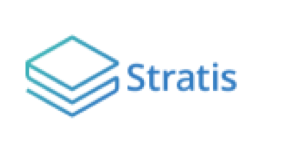Top 10 Cryptocurrencies to Stake and HODL for Passive Income
The cryptocurrency marketplace is known for its volatility, and one of the ways to best take advantage of that is through short-term investments – whether it’s a few months, hours or minutes. But what if you are interested in committing to holding your cryptocurrency for the long run? Is there any comparable way to generate passive income from holding on to your cryptocurrency, the same way you would receive interest by keeping your fiat in a savings account?
The good news is – yes.
There are three main models that currently exist for passively generating income from a cryptocurrency:
Proof of Stake (PoS)
PoS is the computer algorithm with which cryptocurrencies use to achieve consensus. It is newer than its predecessor, the Proof of Work consensus, which relies on mining to achieve consensus, but it’s more energy efficient. Staking means that users stake, or put aside, an amount of the coin or token on the network so that it cannot be used by the network (usually this means they hold it in the official wallet of the currency).
Read More: Proof Of Stake Definition
Users with higher stakes have a greater chance of being chosen as the validator for the next block. Validators also receive network fees that are accrued from any bad behavior on the network. If you decide to take this route to earn passive income on your cryptocurrency, you’re in luck. Many options exist for coins that rely on PoS. Annual returns for staking vary between 1 – 5% depending on the coin.
Running a Masternode
In order to run a maternode, you first need to own 1000 Dash, an open-source P2P cryptocurrency as well as a decentralized autonomous organization (DAO). In addition, you must have a dedicated IP address, be able to run 24 hours a day without more than 1 hour of a connection loss and understand Linux command line. Masternodes can receive block reward payouts, which can add up to 2 dash to every masternode each week. Not all coins have masternodes (and many are not the most popular altcoins), so you’ll have to do some research before choosing one you feel comfortable working with. Annual returns for running a masternode can amount to up to 7.5%, depending on the current value of Dash.
HODLing (i.e. dividends)
This method refers to simply purchasing a currency and holding it in a wallet. As its name implies, it refers to holding onto currencies (hold on for dear life) in order to receive dividends from the money they hold.
Read More: HODL Definition
These dividends paid out to HODLers gives them an incentive to make long-term investments, which is an important factor that leads to greater price stability of any cryptocurrency.
1. NEO (NEO)

Annual Return: Up to 5.5%
Staking Wallet: NEON wallet
Rebranded from Antshares to NEO in 2017, NEO is both a blockchain platform and a currency. It believes that the convergence of digital assets, digital identity and smart contracts will create the smart economy of the future.
The Chinese blockchain platform allows you to accrue passive income by simply moving your NEO off of any exchange into an official NEO wallet, and automatically generating GAS, the token that powers the NEO network.
You could earn an annual return of up to 5.5% with NEO, but in order to do so you need to make sure to use one of the wallets that let you claim the GAS.
Find out exactly how much NEO GAS you can earn here.

Annual Return: Varies on exchange trading volume
Staking Wallet: MEW or any ERC-20 Wallet
Kucoin Shares is a token for the Kucoin Hong-Kong based cryptocurrency exchange. The overarching goal of Kucoin is to create a cryptocurrency exchange ecosystem where all users benefit as well as a platform that brings blockchain technology to people from all walks of life, or as Kucoin calls it, a People’s Exchange.
Kucoin allocates the platform’s trading fees to users – 40% to those who recommend other users. Another 50% is distributed to KCS holders. You’ll receive small amounts of a range of the different coins traded that day. It is important to note, however, that these percentages will be reduced in the future.
3. Qtum (QTUM)
Learn more about earning extra KCS here.

Annual Return: Up to 5%
Staking Wallet: QTUM wallet
Qtum is a decentralized and open-source smart contracts platform and value transfer protocol. Their mission is to keep the network decentralized and deliver smart contracts to everyone. With Qtum, anyone with even 1 qtum can help secure the network through its proof of stake consensus protocol in which node operators are rewarded for validating transactions.
You can earn Qtum by holding the currency in the Qtum wallet and receiving dividends.
You can calculate the dividends from holding Qtum here.
4. Lisk (LSK)

Annual Return: Up to 10%
Staking Wallet: Lisk Nano wallet
LISK’s blockchain applications platform allows developers to easily build, publish and monetize their own blockchain applications. Its Delegated Proof of Stake (DPoS) system is based on the traditional PoS with a slight twist: Delegates must be in the top 101 to receive staking rewards. Delegates can then share the rewards with voters that voted them as delegates, enabling them to receive percentage of their earnings in return. For best returns for your effort, consider staking at least 400 LSK.
Learn more about staking and voting for delegates on LISK’s platform here.
5. Ark (ARK)

Annual Return: Up to 10%
Staking Wallet: ARK wallet
ARK makes it easy to create your own blockchain via an ecosystem of linked chains and use-cases that make ARK highly flexible, adaptable and scalable. It uses a Delegated Proof of State consensus mechanism, which is similar to PoS, except in which ARK holders vote for a delegate to represent them. As a reward for verifying transactions and keeping the network secure, they receive payment from transactions fees in addition to ARK currency. They also pay out voters as an incentive for them to vote, which means that you can earn ARK by voting for delegates. The amount you receive will vary depending on delegate earnings and percentages.
Learn more about ARK voting here.
6. Decred (DCR)

Annual Return: Up to 30%
Staking Wallet: Decred wallet
Decred is an autonomous digital currency with a voting model that empowers stakeholders. It employs both PoW and PoS to validate transactions. You can earn income through staking Decred, which requires an official wallet and for you to be always connected to the internet. You’ll also need to purchase voting tickets.
Read more about Decred’s staking process here.
7. Pivx (PIVX

Annual Return: Up to 4.8%
Staking Wallet: PIVX Desktop wallet
As its name implies, PIVX (Private Instance Verified Transaction) is focused on privacy and security. A fork of dash, it has a PoS model that incentivizes holders to keep PIVX in their wallet. Before claiming rewards, however, holders must have the wallet open and online for a specific period.
In addition to earning PIVX through staking, you can also run a masternode for the small price of 10,000 PIV.
For those who want to help build the community, PIVX also offers the opportunity to earn PIV through helping out with community projects, including development, marketing, and customer support.
Learn more about PIVX’s reward system here.
8. Neblio (NEBL)

Annual Return: Up to 10%
Staking Wallet: Neblio wallet
Neblio is a secure, distributed platform for enterprise applications and services that run on the Neblio blockchain network.
You can earn Neblio by staking coins. Their staking system is highly dependent on the age of your coins. In other words, the longer you stake your coins, the more Neblio you are likely to receive. You must keep Neblio in your wallet for at least 24 hours in order to receive staking returns.
Learn more about Neblio’s staking system here.
9. Stratis (STRAT)

Annual Return: Up to 1%
Staking Wallet: Stratis Desktop Wallet
Stratis is a blockchain-based platform that offers end-to-end solutions for development, testing and deployment of C# blockchain applications on the .Net framework. STRAT, the currency that powers the Stratis blockchain, can be earned through staking it in a Stratis wallet. Although the annual return is lower compared to other currencies, it could be profitable if you have a significant amount of Stratis.
You can download the Stratis wallet here to begin staking.
10. Komodo (KMD)

Annual Return: Up to 5%
Staking Wallet: Komodo Wallet
Komodo uses the same protocol as Zcash, a new cryptographic zero-knowledge protocol. In addition to this, Komodo’s consensus mechanism is Delayed Proof of Work (DPOW, and it provides an extra layer of security. Their decentralized exchange is powered by atomic swamps, rather than proxy tokens or pegged assets. The Komodo currency is the official currency for the SuperNET ecosystem, a decentralized organization developing open-source and decentralized tools for the cryptocurrency market.
Holders of KMD can receive up to 5% annually by having more than 10 KMD in their wallet and compounding that reward each month. This reward system was recently implemented to encourage more active movement on the blockchain. Holders must use their funds each month to maximize rewards in the Komodo system.
Read more about how you can receive Komodo rewards here.


